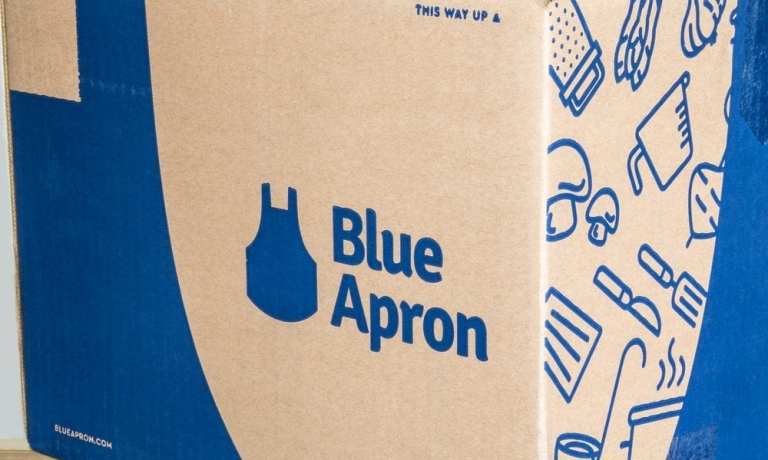Blue Apron Sees Upside Potential In Meal Kits Despite Industry Challenges

The meal kit industry is full of challenges – from subscriber churn to competition in a crowded field. But some firms see opportunities in the space despite its inherent hurdles.
Blue Apron President and CEO Linda Findley Kozlowski, in one case, said the space is “still a very new industry” on a Wednesday (Feb. 19) earnings call with analysts. And as Blue Apron pursues a turnaround and mulls “strategic alternatives,” the company still sees potential in the meal kit industry.
Kozlowski noted that “as one of the larger players in this space, we do still see significant opportunity for upside particularly tracking against growth in online grocery spend and other areas.” But she acknowledged on the earnings call that arriving at a point of efficiency, as well as moving marketing forward, is one of the space’s biggest hurdles and opportunities.
Kozlowski said Blue Apron believes that all of the operational and financial rigor the company set has placed it in a good spot to take advantage of that marketing opportunity in the future with the proper amount of investment. The executive also noted that the company believes that “our brand remains the strongest in the U.S. industry.”
But Kozlowski said the company is “seeing increased pressure from the competitive landscape,” especially when it comes to a dollar-for-dollar marketing view. When the company considers strategic alternatives, part of its focus is how it further invests with an emphasis on marketing partly for that reason.
The executive also noted that growth from companies such as HelloFresh is a “helpful prove point” that “when you have the right resources and the marketing muscle, there is opportunity in the industry.”
The Strategy
Kozlowski said the company still has a focus on its three-pronged strategy, which had been announced in the past. That plan is aimed at powering customer and revenue growth by engaging more shoppers who have its best customer characteristics, providing more extensive menu choice as well as flexibility, and more efficiently scaling its marketing.
But Kozlowski said that, as the company keeps piloting new product offerings and rolls out further capabilities, “it will continue to take investment to realize the benefits of these efforts as we are working to reverse negative trends from prior years.” As a result, the company’s board — with the management team support — is weighing what Kozlowski called “strategic alternatives.”
Those options could encompass a capital raise via private or public markets, a strategic business combination, or a transaction that leads to a sale or private ownership of the company. Another option could be a mixture of those possibilities. The company also has plans to close its facility in Arlington, Texas and have a consolidation of its volume into its California and New Jersey facilities to keep servicing its national footprint more efficiently.
The company said that “this continued optimization enables the company to redirect financial resources into other parts of the business, including growth initiatives.”
The Meal Kit Market
Shoppers, for their part, like meal kit services — the market generated about $3 billion in revenue in 2018 per PYMNTS data on the meal kit industry. But they don’t remain with those meal kit services: One survey found that while 19 percent of U.S. adults have tested out a meal kit service, the lion’s share of consumers churn out. Of the entire subset of consumers who report having tried meal kits, just under four in ten – or 38 percent – are still subscribing.
Some meal kit providers, however, have taken an alternative to subscriptions. With FIX, for instance, customers just shop for meal kits and buy them a la carte when they want them. If a consumer has their order in by 10 p.m. the day before they want their meals. It will be waiting on their doorstep by dinnertime the following day. FIX, for its part, lets shoppers choose delivery time and commits to delivery by its workers within 15 minutes of the selected time.
At the same time, meal kits are also appearing (and re-appearing) in other venues such as grocery stores. Albertsons, in one case, re-introduced Plated meal kits in stores. The meal kits reportedly have a revamped brand and work similarly with a collection of ingredients with a recipe but the ingredients now come chopped ahead of time as grocers, in addition to delivery services, aim to compete in the meal kit landscape.